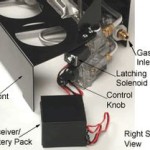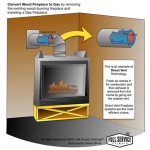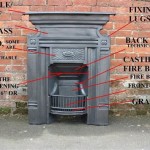Understanding the Gas Fireplace Battery Box
Gas fireplaces offer a convenient and aesthetically pleasing heating solution for many homes. Unlike traditional wood-burning fireplaces, gas fireplaces provide consistent and controllable heat with minimal effort. However, a critical component often overlooked is the battery box, which plays a vital role in the functionality of certain gas fireplace models during power outages or when main power is unavailable. This article aims to provide comprehensive information about the gas fireplace battery box, its function, maintenance, and troubleshooting.
The primary purpose of a gas fireplace battery box is to provide a backup power source for the ignition system and, in some cases, the blower fan. Many modern gas fireplaces rely on electronic ignition systems rather than a pilot light that burns continuously. These ignition systems require electricity to generate a spark or heat an igniter, which then lights the main burner. When the primary power source, typically a standard household electrical outlet, is interrupted, the battery box seamlessly takes over, allowing the fireplace to continue operating. This feature is especially valuable during power outages in colder climates, providing a reliable source of heat.
The battery box typically houses a set of batteries, often AA, C, or D cell batteries, depending on the specific model and power requirements of the fireplace. The location of the battery box varies depending on the fireplace design, but it is commonly found behind the lower access panel, near the control valve, or within the firebox itself. Accessing the battery box usually involves removing screws or clips that secure the access panel. Once accessible, the batteries can be inspected and replaced as needed.
Key Point 1: Functionality and Purpose
The gas fireplace battery box serves a crucial function by ensuring the fireplace remains operational during power outages. Its purpose extends beyond simple convenience; it offers a safety net, particularly in regions prone to severe weather conditions where power interruptions can be frequent and prolonged. By providing an alternative power source, the battery box allows homeowners to maintain a comfortable and safe environment when the main power grid fails.
Consider a scenario where a winter storm knocks out power to a home. Without a functional battery box, a gas fireplace with electronic ignition would be rendered useless, leaving the occupants without a reliable heat source. The battery box bypasses this limitation, enabling the fireplace to function independently of the primary electrical supply. This is especially important for individuals with medical conditions or vulnerable populations such as the elderly or infants, who are more susceptible to the effects of cold.
Furthermore, the battery box contributes to energy efficiency. In models equipped with blower fans, the battery box can power the fan even when the main power is off. This allows for better distribution of heat throughout the room, maximizing the efficiency of the gas fireplace and reducing the need for supplemental heating sources. This is particularly beneficial in larger rooms or open-concept living spaces where heat distribution can be challenging.
It is important to note that not all gas fireplaces are equipped with battery boxes. Older models often rely on a continuously burning pilot light, which does not require electricity for ignition. However, these pilot lights consume a small amount of gas continuously, making them less energy-efficient than newer models with electronic ignition systems. When selecting a gas fireplace, it is essential to consider the presence of a battery box and its potential benefits in terms of reliability and energy efficiency.
The capacity of the battery box is also a determining factor in the length of time the fireplace can operate during a power outage. A battery box designed to house larger batteries or a greater number of batteries will provide a longer runtime compared to a smaller unit. Understanding the capacity of the battery box and selecting appropriate batteries is crucial for ensuring adequate backup power during extended outages.
Key Point 2: Maintenance and Battery Replacement
Regular maintenance of the gas fireplace battery box is essential to ensure its proper functioning when needed. This includes periodic inspection of the batteries for corrosion, leakage, and proper voltage. Corroded batteries can damage the battery box and compromise its ability to provide power. Leaking batteries can also cause damage to the surrounding components of the fireplace. Regular inspection can help identify and address these issues before they lead to more significant problems.
The frequency of battery replacement depends on several factors, including the type of batteries used, the frequency of power outages, and the age of the batteries. As a general guideline, it is recommended to replace the batteries in the battery box at least once a year, even if they appear to be in good condition. This ensures that the batteries have sufficient charge to power the ignition system during an outage. Using high-quality alkaline batteries is recommended for optimal performance and longevity.
When replacing the batteries, it is crucial to follow the manufacturer's instructions carefully. Ensure that the batteries are inserted with the correct polarity, as incorrect polarity can damage the battery box or the ignition system. It is also important to clean the battery contacts with a dry cloth or a cotton swab to remove any corrosion or debris that may be present. This will ensure a good electrical connection between the batteries and the battery box terminals.
Some gas fireplace models feature a battery indicator light that alerts the user when the batteries are running low. This is a helpful feature that provides a visual indication of the battery status and allows for timely replacement. If the battery indicator light is illuminated, it is essential to replace the batteries as soon as possible to avoid being caught off guard during a power outage.
Proper disposal of used batteries is also important. Batteries contain hazardous materials and should be disposed of according to local regulations. Many retailers offer battery recycling programs, which allow for the safe and responsible disposal of used batteries. By participating in these programs, homeowners can help protect the environment and prevent the release of harmful substances.
Key Point 3: Troubleshooting Common Issues
Several issues can arise with the gas fireplace battery box, preventing it from functioning correctly. One common problem is corrosion on the battery terminals, which can impede the flow of electricity. This can be resolved by cleaning the terminals with a wire brush or a cotton swab dipped in a mixture of baking soda and water. After cleaning, ensure the terminals are completely dry before reinserting the batteries.
Another potential issue is incorrect battery polarity. If the batteries are inserted incorrectly, the fireplace will not ignite. Double-check the polarity markings inside the battery box and ensure that the batteries are inserted with the correct orientation. If the fireplace still does not ignite after correcting the polarity, the batteries may be depleted and require replacement.
Sometimes, the battery box itself may be damaged or defective. This can be caused by physical damage, such as cracks or breaks in the plastic casing, or by internal electrical faults. If the battery box appears to be damaged, it should be replaced by a qualified technician. Attempting to repair a damaged battery box can be dangerous and may void the fireplace warranty.
If the gas fireplace fails to ignite even with fully charged batteries and clean terminals, the problem may lie elsewhere in the ignition system. This could be due to a faulty igniter, a malfunctioning gas valve, or a problem with the control module. In such cases, it is recommended to consult a qualified gas fireplace technician for diagnosis and repair.
It is crucial to emphasize that working with gas appliances involves inherent risks. If unsure about any aspect of maintaining or troubleshooting a gas fireplace, it is always best to seek professional assistance. Qualified technicians have the knowledge, experience, and tools necessary to safely and effectively diagnose and repair gas fireplace problems. Attempting to perform repairs without proper training can be dangerous and may lead to serious injury or property damage.
In summary, the gas fireplace battery box is an essential component for ensuring reliable operation during power outages. Regular maintenance, including battery inspection and replacement, is crucial for maintaining its functionality. When troubleshooting issues, it is important to exercise caution and seek professional assistance when necessary. By understanding the purpose, maintenance, and troubleshooting of the gas fireplace battery box, homeowners can ensure the continued safety and comfort of their homes.

Battery Pack At Gas Fireplace Nonprofit Home Inspections

Skytech Mrck Sr 1001 Receiver Box Only

Quadrafire Gas Fireplace Battery Pack Srv2166 323

Skytech Un3 Receiver Box Only

Skytech Smart Batt Ii Iii Receiver Box Only

Hht Gas Stove Amp Fireplace Battery Pack Srv593 594 Oem

Battery Pack At Gas Fireplace Nonprofit Home Inspections

Acumen Fireplace Remote Troubleshooting Spotix Blog

Durablow Tr1001 Gas Fire Fireplace Remote Control Kit On Off Battery Com

Skytech Tm R 2 Receiver Box Only
Related Posts








